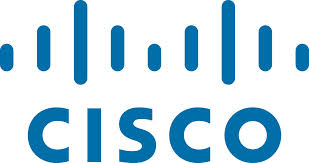Friday, June 24, 2011
XConnect launches Video Interconnection Exchange
Well, that title is a mouthful, but it's good news for anyone who likes using video for calling or conferencing - and especially those who want to do this but cannot.
Let's start with XConnect. They're a U.K. based pioneer in the IP peering space, a market I've been following for several years. It's been slow to develop critical mass, and I'm one of several analysts who have commented about the reasons, but most of us know that the underlying concept has value.
Until now, most IP peering initiatives have been voice-centric, but there's simply not enough money in it - or arbitrage opportunity - to make this a household name. The value proposition for video, however, is more attractive, and that brings us to VIE. Aside from the fact that video endpoints aren't ubiquitous, there are two basic barriers to growth. First is cost - video-enabling technology is expensive, and video is bandwidth-intensive, requiring operators and enterprises to invest heavily in upgrading their networks. The second major holdback is technology-based - specifically around interoperability. There's a mishmash of standards and protocols that make video difficult/impractical/impossible to do when trying to connect between or among networks.
This is XConnect's world, and to address these problems, they launched VIE - Video Interconnection Exchange - earlier this week. I had a briefing this morning with their CEO and Founder, Eli Katz, so I'll share some thoughts that go beyond the news.
The basic idea here is for XConnect to serve as the hub for a federation that addresses the above-stated technical issues, hence enabling video between IP networks. It sounds simple, but it's not - XConnect has been at this a long time, and they feel the market is now ready. Their news included comments from one VIE member, Telio. Long time followers of my blog will be familiar with this Norway-based operator, and they've been doing video calling for years. Telio is definitely an early adopter-type, and represents the type of operator that sees the value here.
I suspect U.S.-based operators will take a bit longer to catch on, but video calling is not new in E.U. or Asian markets. For consumers, of course, smartphones and tablets are simply kicking video into overdrive, and that's really going to accelerate the adoption of all things video. This means that consumers will actually drive demand here, and that's where I think things will get interesting for VIE. Think of it as video roaming. It won't take long for consumers to get beyond their My 5 circles of friends and family to wanting to do video calling anywhere/any time, with anyone.
The enterprise market is a different story - same for SMBs - the other two markets VIE is after. Now we're talking about conferencing and collaboration, which takes us into the worlds of telepresence and UC. There's more complexity here, especially around security, and I think carriers will have to be more proactive in pitching the VIE story to their business customers. As such, I think the business market for VIE will be driven more from the supply side, but that's ok. At least in this case, carriers are addressing a known problem, and there is pent-up demand for businesses to make greater use of video.
Being vendor-neutral, VIE sits in the middle of all this, and with their cloud infrastructure, offers a safe middle world where federation can take place. The key here is getting carriers to add their IP addresses to XConnect's ENUM registry, and as with anything cloud-based, there is a basic matter of trust to consider. However, carriers need to weigh that against current alternatives, and if they factor in what VIE offers in terms of enabling IP interconnectivity, scalability, security and cost effectiveness, the business case should become a lot stronger.
On that note, the business models aren't entirely clear to me, but once carriers decide they need to offer this capability to meet customer demands, they'll figure out pricing schemes pretty quickly. This will probably take the form of monthly subscription fees, much like the tiered options we have for broadband service. Whatever form that takes, I think the odds of success are pretty good, since market demand is real. As mentioned, the business market will probably take longer to kick in, but once carriers find success with consumers, they'll find ways to make it work for enterprises and SMBs.
Disclosure - I'm an Advisor to XConnect, but not actively involved in their everyday operations. I'm sharing this to be fully transparent, but that aside, I can objectively say that the trend around video peering is becoming more real now, and VIE is a tangible proof point. As other developments emerge in this space, I will comment accordingly. I am in fact, working on another one currently, but it's not ready for public consumption. Stay tuned!
Let's start with XConnect. They're a U.K. based pioneer in the IP peering space, a market I've been following for several years. It's been slow to develop critical mass, and I'm one of several analysts who have commented about the reasons, but most of us know that the underlying concept has value.
Until now, most IP peering initiatives have been voice-centric, but there's simply not enough money in it - or arbitrage opportunity - to make this a household name. The value proposition for video, however, is more attractive, and that brings us to VIE. Aside from the fact that video endpoints aren't ubiquitous, there are two basic barriers to growth. First is cost - video-enabling technology is expensive, and video is bandwidth-intensive, requiring operators and enterprises to invest heavily in upgrading their networks. The second major holdback is technology-based - specifically around interoperability. There's a mishmash of standards and protocols that make video difficult/impractical/impossible to do when trying to connect between or among networks.
This is XConnect's world, and to address these problems, they launched VIE - Video Interconnection Exchange - earlier this week. I had a briefing this morning with their CEO and Founder, Eli Katz, so I'll share some thoughts that go beyond the news.
The basic idea here is for XConnect to serve as the hub for a federation that addresses the above-stated technical issues, hence enabling video between IP networks. It sounds simple, but it's not - XConnect has been at this a long time, and they feel the market is now ready. Their news included comments from one VIE member, Telio. Long time followers of my blog will be familiar with this Norway-based operator, and they've been doing video calling for years. Telio is definitely an early adopter-type, and represents the type of operator that sees the value here.
I suspect U.S.-based operators will take a bit longer to catch on, but video calling is not new in E.U. or Asian markets. For consumers, of course, smartphones and tablets are simply kicking video into overdrive, and that's really going to accelerate the adoption of all things video. This means that consumers will actually drive demand here, and that's where I think things will get interesting for VIE. Think of it as video roaming. It won't take long for consumers to get beyond their My 5 circles of friends and family to wanting to do video calling anywhere/any time, with anyone.
The enterprise market is a different story - same for SMBs - the other two markets VIE is after. Now we're talking about conferencing and collaboration, which takes us into the worlds of telepresence and UC. There's more complexity here, especially around security, and I think carriers will have to be more proactive in pitching the VIE story to their business customers. As such, I think the business market for VIE will be driven more from the supply side, but that's ok. At least in this case, carriers are addressing a known problem, and there is pent-up demand for businesses to make greater use of video.
Being vendor-neutral, VIE sits in the middle of all this, and with their cloud infrastructure, offers a safe middle world where federation can take place. The key here is getting carriers to add their IP addresses to XConnect's ENUM registry, and as with anything cloud-based, there is a basic matter of trust to consider. However, carriers need to weigh that against current alternatives, and if they factor in what VIE offers in terms of enabling IP interconnectivity, scalability, security and cost effectiveness, the business case should become a lot stronger.
On that note, the business models aren't entirely clear to me, but once carriers decide they need to offer this capability to meet customer demands, they'll figure out pricing schemes pretty quickly. This will probably take the form of monthly subscription fees, much like the tiered options we have for broadband service. Whatever form that takes, I think the odds of success are pretty good, since market demand is real. As mentioned, the business market will probably take longer to kick in, but once carriers find success with consumers, they'll find ways to make it work for enterprises and SMBs.
Disclosure - I'm an Advisor to XConnect, but not actively involved in their everyday operations. I'm sharing this to be fully transparent, but that aside, I can objectively say that the trend around video peering is becoming more real now, and VIE is a tangible proof point. As other developments emerge in this space, I will comment accordingly. I am in fact, working on another one currently, but it's not ready for public consumption. Stay tuned!
Subscribe to:
Post Comments (Atom)











No comments:
Post a Comment